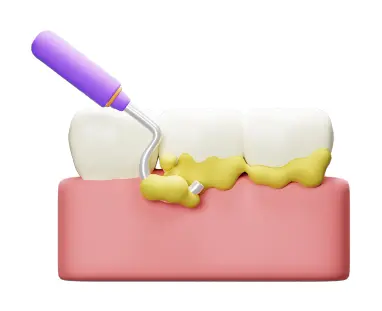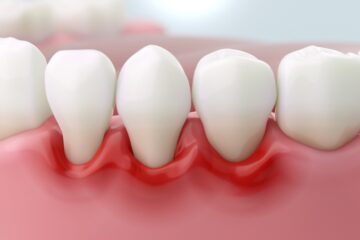There are several types of gum treatment that can be used to address various gum-related issues. These treatments are typically performed by dentists or periodontists (gum specialists) and can range from non-invasive methods to more advanced surgical procedures. Here are a few common types of gum treatment:

- Professional Dental Cleaning: Regular dental cleanings help remove plaque and tartar buildup from the teeth and gumline, reducing inflammation and preventing gum disease.
- Scaling and Root Planing: This deep cleaning procedure is often recommended for patients with gum disease (periodontitis). It involves removing plaque, tartar, and bacteria from the tooth roots and smoothing the tooth surface to discourage further bacterial growth and promote gum healing.
- Laser Therapy: Laser treatment can be used to remove diseased gum tissue and promote gum reattachment in cases of gum disease. It is a minimally invasive and often less painful approach compared to traditional surgical methods.
- Gum Surgery: In advanced cases of gum disease or for certain gum-related issues, gum surgery may be necessary. Procedures such as gum grafting, flap surgery, or bone grafting can be performed to repair damaged gum tissue, treat gum recession, or regenerate bone loss.
- Replacement of missing teeth: If gum disease has led to tooth loss, dental implants or other suitable prosthesis may be recommended. The replacement of missing teeth are important for long term maintenance of the gum health and also improve the quality of life.
It’s important to consult with a dental professional who can evaluate your specific condition and provide a personalized treatment plan based on your needs. Regular dental check-ups and maintaining good oral hygiene practices are essential for preventing gum issues and maintaining healthy gums.




